The Food & Wine Guide to Sourcing and Preparing Each Type of Crab
Here's where and when to source the main crab varieties and how to serve each.
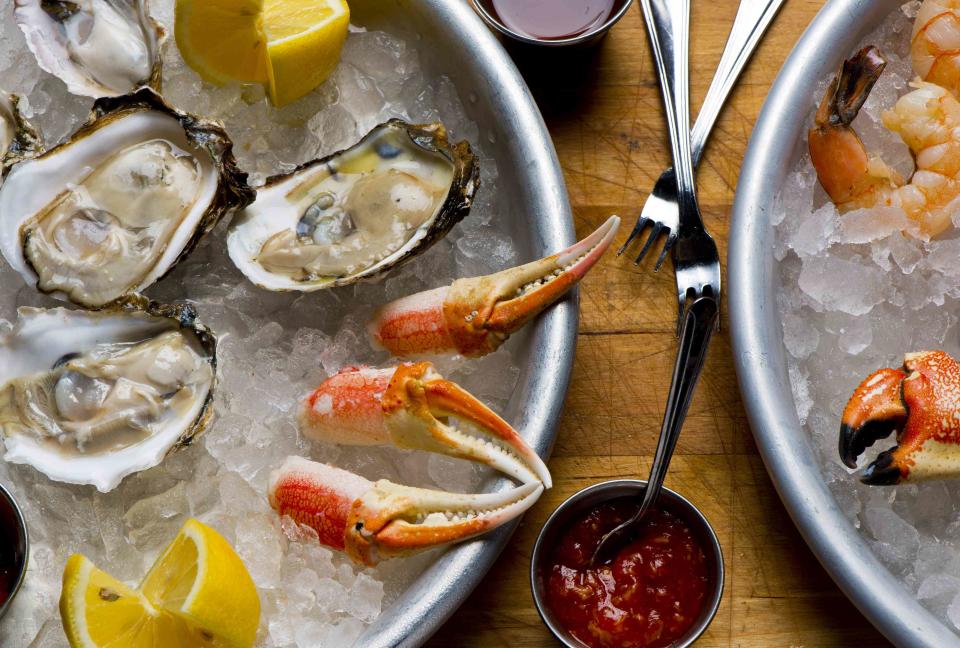
rebeccafondren / Getty Images
Thousands of crab species wander the depths of the oceans, bays, streams, and lakes, ranging from pea size to a dozen feet long. To devour the delicacies, you’ll find a handful of varieties in restaurants, seafood markets, and grocery stores, including king, snow, blue, stone, and Dungeness crabs. While these five types of crabs share some features, the taste and preparation methods are each unique. Here’s a breakdown of where and when to find these crabs and how to prepare them.
King crab
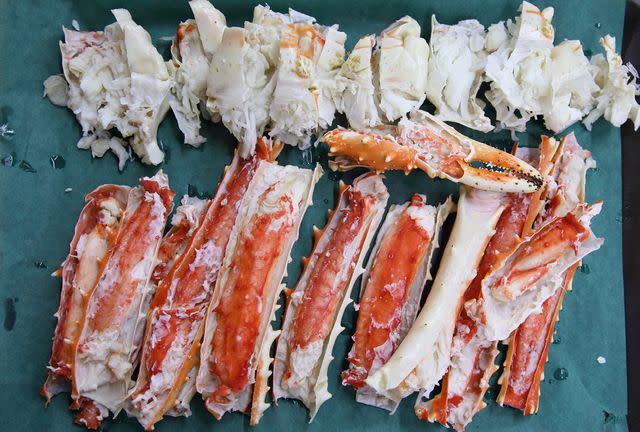
seng chye teo / Getty Images
As the name would suggest, the king crab outranks most other crab species in size. King crabs served in U.S. restaurants come mainly from the waters near Alaska and British Columbia. They’re also found in Japan and Russia, though the U.S. has banned direct imports from the latter since 2022. While there are more than 40 types of king crab, three are most commonly harvested in Alaska, according to the Alaska Department of Fish and Game: red, blue, and golden king crab, caught between October and January.
Known for their spiky long legs that diners break apart with a seafood cracker or kitchen scissors, they can be boiled, steamed, baked, or grilled. Dense and rich, their flavor and most common method of eating — drizzled with lemon and dipped in melted butter — is reminiscent of another seafood delicacy, lobster. They make an excellent addition to salads, like this king crab salad with grapefruit and avocado or this fennel-and-endive slaw with crab.
Stephanie Pazzaglia, business development manager for seafood distributor J.J. McDonnell & Co. Inc., says consumers purchasing king crab from the grocery aisles can find it year-round in the frozen section. It usually comes already cooked. “In preparation, you're really just warming it up or steaming it rather than cooking it all the way through,” she says.
Related: 23 Crab Recipes to Add to Your Repertoire
Snow crab
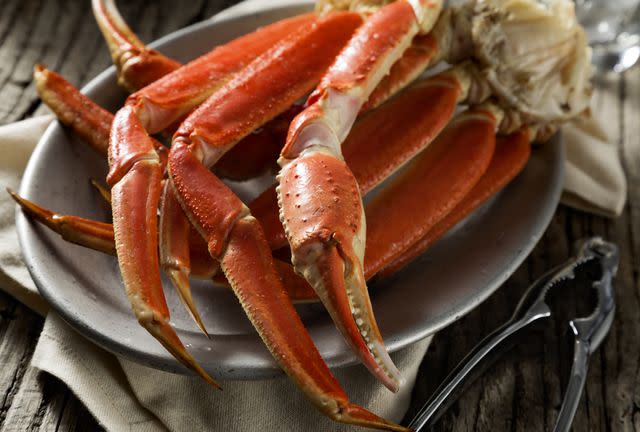
mphillips007 / Getty Images
Though their appearance resembles king crabs, snow crabs are smaller and have smoother legs that eaters can break apart with their hands. Found in frigid waters in Alaska, Canada, Maine, Greenland, Norway, and Russia, snow crabs get their name from the meat that turns from red to white after cooking. (The crab season in the Alaskan Bering Sea has been canceled in recent years due to a dwindling population caused by climate change.)
Snow crabs are sweet and delicate, and like king crab, the fibrous meat makes them easy to toss into a vegetable salad or sub for lobster to make a snow crab roll. Seafood lovers can eat them straight from the shell with the same preparation and lemon-and-butter accompaniment as king crabs. J.J. McDonnell Fresh Purchaser Jordi Powell says the firm texture also makes it a favorable crab for sushi.
Blue crab
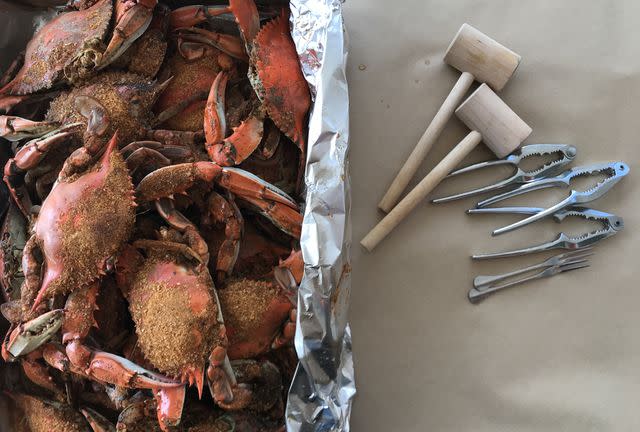
Cyndi Monaghan / Getty Images
Callinectes sapidus, which fittingly translates to beautiful savory swimmer, is the scientific name for blue crabs, distinguished by their shimmery blue color. Found from Nova Scotia to Argentina, including the Atlantic and Gulf coasts in the U.S., blue crabs remain dormant in the winter. Maryland Department of Agriculture’s Seafood Marketing Director Matthew Scales says that’s when they build up the fat reserves that provide the rich flavor for which the state’s blue crabs are known for. Their season runs from April to November.
In the Chesapeake Bay and Maryland, where crabs are the unofficial state mascot, crustaceans are steamed and seasoned with J&O or Old Bay seasoning. Friends and family gather around a newspaper-covered table where the crabs are piled and use a mallet or their bare hands to extract the crab meat.
The other most common preparation are crab cakes, in which jumbo lump crab meat is mixed with egg, mayo, seasoning, and breadcrumbs (or other starches) and shaped into cakes. Most Marylanders prefer to broil them, while in other parts of the country, cooks prefer to pan fry the dish. Diners who don’t like getting their hands dirty can eat blue crabs whole when soft-shell crabs — crabs that have shed their hard exterior — are in season, from spring to fall. They’re typically grilled or coated with flour or breading and pan- or deep-fried, served with a savory dipping sauce or eaten between two thick slices of white bread.
Related: 12 Blue Crab Recipes, From Claws to Crab Cakes
Stone crab
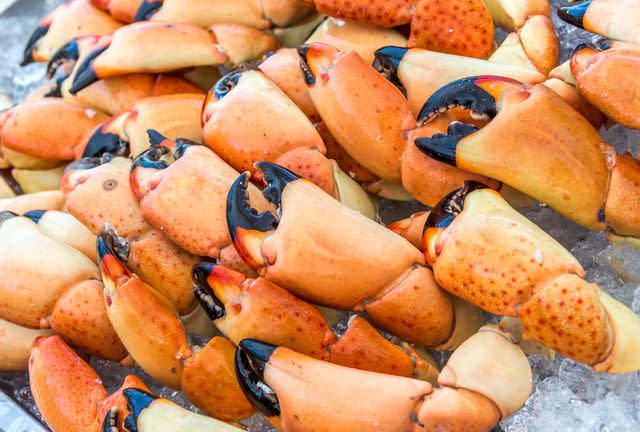
Alexcrab / Getty Images
Just as blue crabs are synonymous with Maryland, stone crab claws are a delicacy associated with Florida, where the season runs from Oct. 15 to May 1. Though the bulk of stone crabs sold in the U.S. hail from the Sunshine State, they also crawl in warm waters stretching from North Carolina to Belize. The Florida Fish and Wildlife Commission stipulates that only claws that measure a minimum of 2 7/8 inches long can be harvested. The catchers return the crabs to the water where it regrows the claws, making it a sustainable seafood option.
Salty and briny in flavor, stone crabs are a popular raw bar and seafood tower item, Powell says. Because the flesh breaks apart easily, it’s best to eat in one piece, preferably with a savory dipping sauce.
Dungeness crab
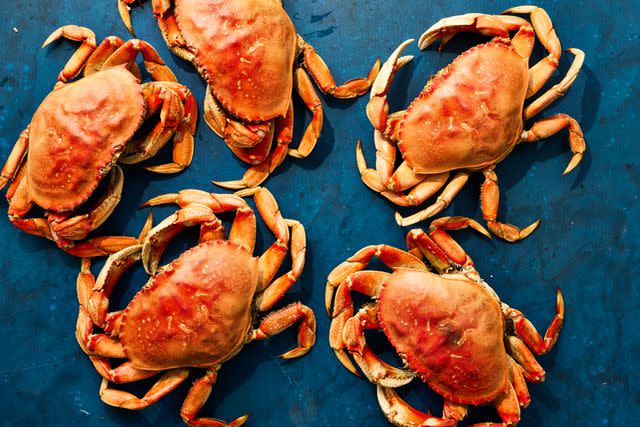
Victor Protasio / Food Styling by Margaret Monroe Dickey / Prop Styling by Christine Keely
Dungeness crabs are found in the cold waters off the coasts of Alaska, Northern California, Oregon, and Washington, with the San Francisco Bay Area being a singular hotbed. Prized for flaky, sweet, juicy meat, Dungeness crab ranges from 7 to 9 inches in width and 1 1/2 to 2 pounds in weight.
Related: The Complete Guide to Dungeness Crab
For more Food & Wine news, make sure to sign up for our newsletter!
Read the original article on Food & Wine.

 Yahoo Lifestyle
Yahoo Lifestyle 
